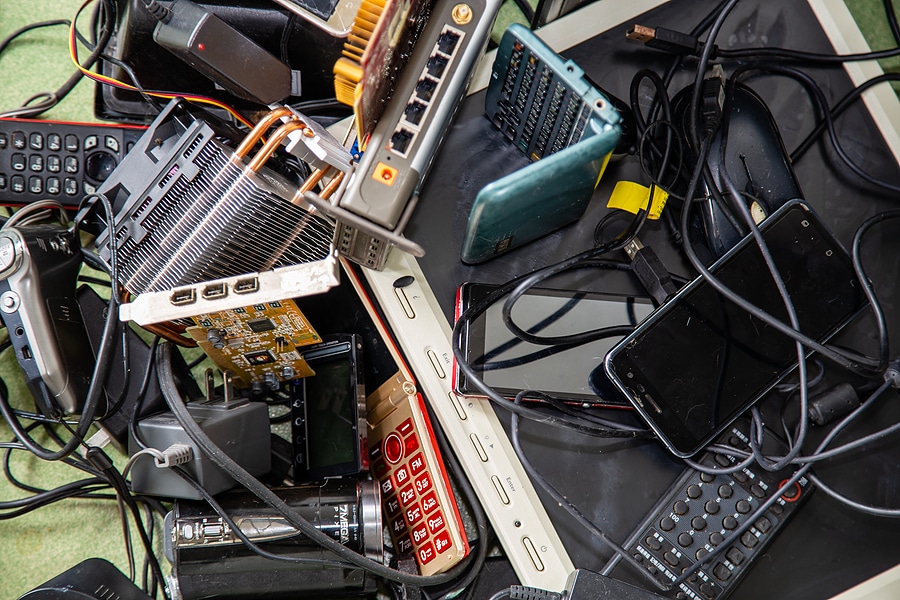Why Your Company Should Think about E-Waste Management

As our world grows more and more interconnected, the technology to make those connections continues to advance, as well. Every year, companies replace thousands of routers and modems, re-run miles and miles of cables, and upgrade servers, desktops, laptops, and other electronic devices that help to make our modern world function.
But what happens to the devices and cables being replaced? Even the most efficient company will produce e-waste, and it’s important to have a plan for how to properly dispose of these materials. Without an established procedure for disposal or recycling, these objects end up in landfills, which in turn can cause an environmental hazard. That’s why it’s important for your company to have a clear policy regarding e-waste.
Finding the Right ITAD Company
The first step in taking control of your e-waste management is to find the right ITAD company, specifically one that is certified to handle e-waste. There are a number of certified companies to choose from for South and North Dakota businesses, including SEAM, that provide proper e-waste disposal and recycling services.
Certifications help set these companies apart. When a company is certified to R2 and/or e-Stewards, you know they follow strict guidelines regarding environmentally responsible disposal, security, and recycling practices, including proper data destruction and bans on exporting or landfilling. By choosing a company with these certifications, you can not only help to limit the amount of e-waste that ends up where it doesn’t belong, but also protect yourself.
Practical Reasons for Managing E-Waste
There are some practical ways e-waste affects you, too. First and foremost, because modern electronics are created using manufacturing processes that include rare earth elements, each unit produced leads to the consumption of precious minerals and creates carbon dioxide emissions. By recycling, you help to keep the original materials in circulation while lowering the carbon footprint of your company. You might consider purchasing refurbished or recycled IT equipment to further cut down on negative impacts, too.
Another key to managing e-waste is to seek employee buy-in. Make sure your employees understand your company’s e-waste policies. When employees understand and embrace these policies, they will not only be more compliant with procedures, but they can also feel good about the fact that they’re helping to make a positive impact on the environment.
E-waste is a growing issue. According to one estimate, over 50 million tons of e-waste are produced globally each year. At the current rates of growth, we could see annual rates of e-waste as high as 120 million tons by 2050, an amount that would cause significant financial and environmental risks.
A Global Responsibility
Establishing responsible e-waste procedures means more than simply reducing your personal environmental impact. Every company uses a number of electronic devices, and as companies grow in size, so do their IT needs. As that demand increases, so does the amount of e-waste, which creates a growing environmental problem. It’s not just companies that have an impact; our homes are increasingly filled with phones, tablets, laptops, monitors, and other devices.
When you establish e-waste policies within your company, you’re signaling a commitment to be a part of a worldwide solution to a worldwide problem.
To learn more about e-waste management in South Dakota or North Dakota, or to set up your own e-waste management procedures, contact SEAM today.
SEAM provides IT recycling and data destruction services including onsite shredding and hard drive wiping to South Dakota, North Dakota, Minnesota, Iowa, and Nebraska.
Schedule a pickup or contact us for more information.





